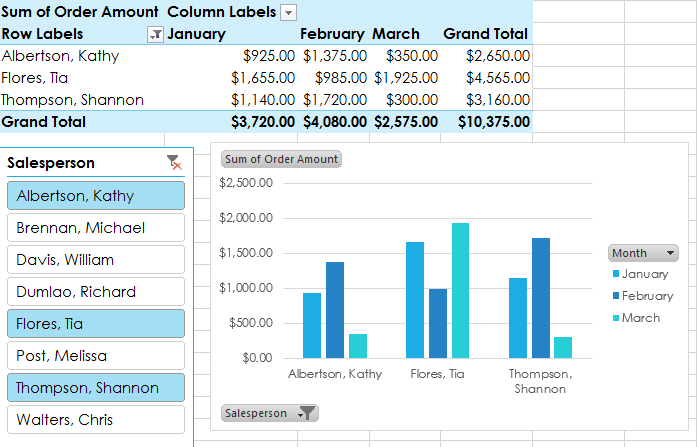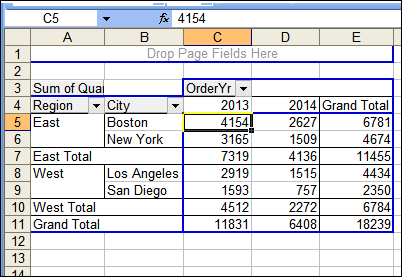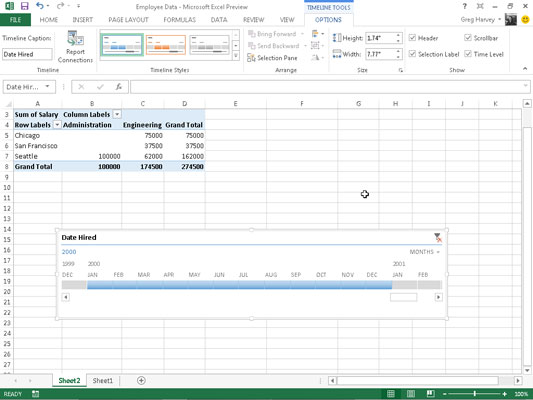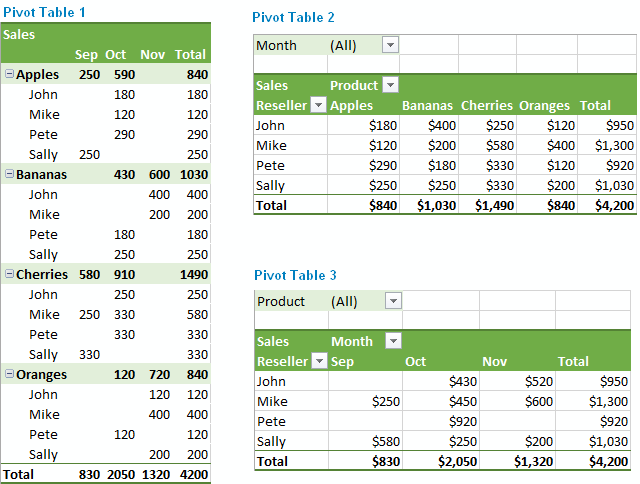

- #How to do pivot tables in excel 2013 how to#
- #How to do pivot tables in excel 2013 Pc#
- #How to do pivot tables in excel 2013 mac#
- #How to do pivot tables in excel 2013 windows#
We can create just about any calculation we can imagine with these. With the data model, we get access to a whole new world of possible calculations using DAX formulas. They come predefined with basic sum, count, average, minimum, maximum, standard deviation and variance calculations. With traditional pivot tables, we don’t need to define any calculations. In order to use DAX formulas, we will need to select the Add this to the Data Model option.

Select a cell inside the data ➜ go to the Insert tab ➜ then press the Pivot Table button. A student can have multiple rows of data when they are enrolled in multiple courses.Ĭan we summarize this data with a pivot table so that we just display each student once and then show a comma separated list of their courses? Insert A Pivot Tableįirst, we will need to insert a pivot table.

Here we’ve got a list of students along with the courses they are enrolled in.
#How to do pivot tables in excel 2013 mac#
Sorry, but these modern features aren’t available in the Mac versions yet.

#How to do pivot tables in excel 2013 Pc#
Traditional pivot tables do not have this functionality.Īlso, we will need to be a PC user with Excel 2013 (or later) and Office 365. The answer is yes, but we will need to use the data model and DAX formulas to do this. Is there any way to summarize text based data that will return text as the result? This is usually the area where we summarize fields by various different aggregation methods like taking the sum, average, minimum, maximum or standard deviation.īut the thing is, these aggregation methods require numeric data! They were wondering if they could have text values in the Values area of a pivot table? To see the steps for setting up the pivot table, and creating the formula, please watch this video.I got a rather interesting question from someone who attended one of my pivot table webinars. Video: Show Distinct Count in Excel 2013 With PowerPivot The result shows the number of distinct stores, or unique stores, in each region and city. So, I used the New Calculated Field command on the Ribbon, and created a formula, using the DISTINCTCOUNT function. The book’s “Add a Measure” section showed a screen shot from Excel 2013, where the name has changed to Calculated Fields. Uh-oh!įortunately, I have a copy of Rob Collie’s book, DAX Formulas for PowerPivot. In the pivot table, I right-clicked on the table name, to add the new measure, but that command didn’t appear. The next step was to build a pivot table in the PowerPivot window, and that went well too. Once the PowerPivot tab was visible, I connected to the Excel file that had the sample data, without any problems. Fortunately, that worked, and the PowerPivot tab showed up again, in Excel 2013. The instructions are in the last section – “Troubleshooting: Power Pivot ribbon disappears”.Īs suggested, I deleted the PowerPivotExcelAddin item in the User Settings section in the registry, but didn’t see a PowerPivotExcelClientAddIn.NativeEntry.1 item in the Addins section, so I skipped that step.
#How to do pivot tables in excel 2013 windows#
That didn’t help, because it was checked.įinally, I stumbled onto this Microsoft article that suggested a change to the Windows Registry. Many articles said the add-in had to be checked in the list of COM add-ins. For unknown reasons, the PowerPivot tab wasn’t showing up on the Excel 2013 Ribbon, even though the add-in was installed, and checked off as active.Ī long and frustrating Google search didn’t turn up any solutions, at first. I decided to make a video to show the steps, using Excel 2013, instead of Excel 2010. In that version, you can right-click on the table name in the field list, to add a new measure.
#How to do pivot tables in excel 2013 how to#
Last year, I described how to create a unique count in an Excel 2010 pivot table, by using the PowerPivot add-in.


 0 kommentar(er)
0 kommentar(er)
